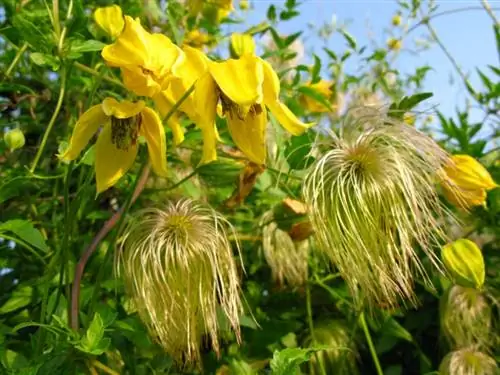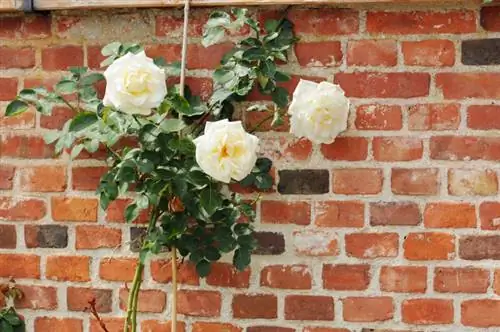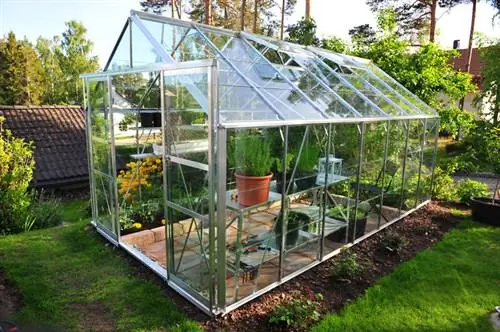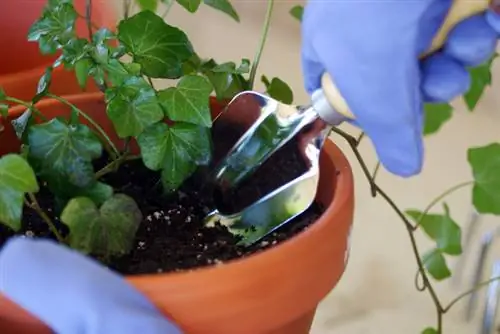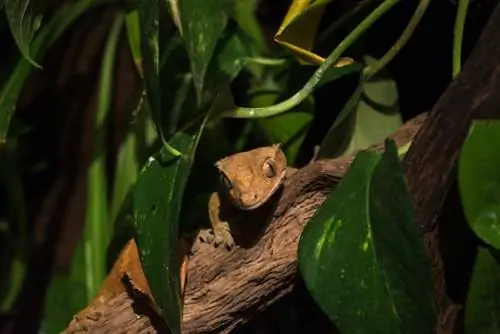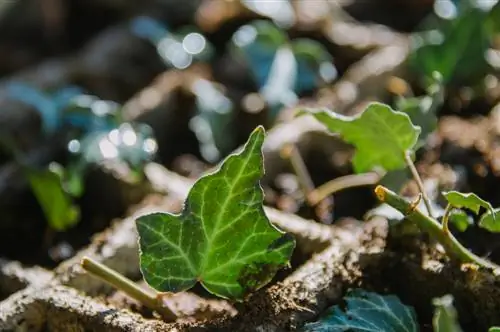- Author admin [email protected].
- Public 2023-12-16 16:46.
- Last modified 2025-01-23 11:20.
The Clematis with its beautiful species and varieties is one of the most popular climbing plants for facade greening. Given their particular growth, the way they are attached is of fundamental importance for both appearance and safety. We explain what’s important.
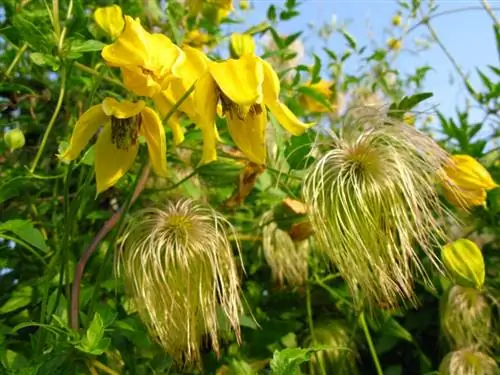
How do I attach clematis to a facade?
In order to securely attach clematis to a facade, rope systems made of stainless steel wire ropes are suitable. These offer various design options, such as close-meshed trellis nets or trellis frames with U-shaped rope covering. Make sure there is a distance of 8-10 cm from the wall for sufficient ventilation.
Attach clematis with rope systems
Mighty clematis, such as Clematis montana, easily reach heights of 8 meters and more. In order to securely attach these majestic climbing plants to green facades, rope systems are the primary option. These are wall-mounted stainless steel wire cables that, thanks to their flexibility, leave no design wish unfulfilled. The following variants are particularly recommended:
- Narrow-meshed climbing nets with high rope density for large-flowered, medium-high growing clematis
- Rope systems arranged in standing rectangles for the robust Italian clematis Clematis viticella
- Trellis frame with U-shaped rope covering for greening free-standing walls and pergolas
- Modern wall grilles made of stainless steel rods, supplemented by cross clamps for individual cable routing
Whatever system you use to attach a clematis to the facade, its urge to grow vertically should always be taken into account. It is not enough to offer the plant horizontal climbing aids. It will only extend its shoots here when they are directed in the desired direction as part of the annual pruning.
Tip
Every clematis climbing aid should maintain a distance of at least 8-10 centimeters from the wall. Otherwise there is a risk of disease infestation due to the lack of ventilation in the rear tendrils.
Fixing small clematis to wooden trellises
A wonderfully flowering clematis does more than just serve as a green facade. Species that remain relatively small, such as Clematis alpina, also serve as a fantastic privacy screen on the balcony or terrace. To do this, plant the clematis in a flower box with an integrated trellis. Attach the lower tendrils to the struts with raffia ribbon (€13.00 on Amazon) or special clips. With the help of its long petioles, the clematis climbs the trellis under its own power.
Tip
Clematis montana develops extra long petioles that allow it to encompass profiles of up to 90 mm in diameter. This clematis is particularly suitable for greening large facades if stable climbing aids need to be installed that can support the enormous weight of plants growing several meters high.

